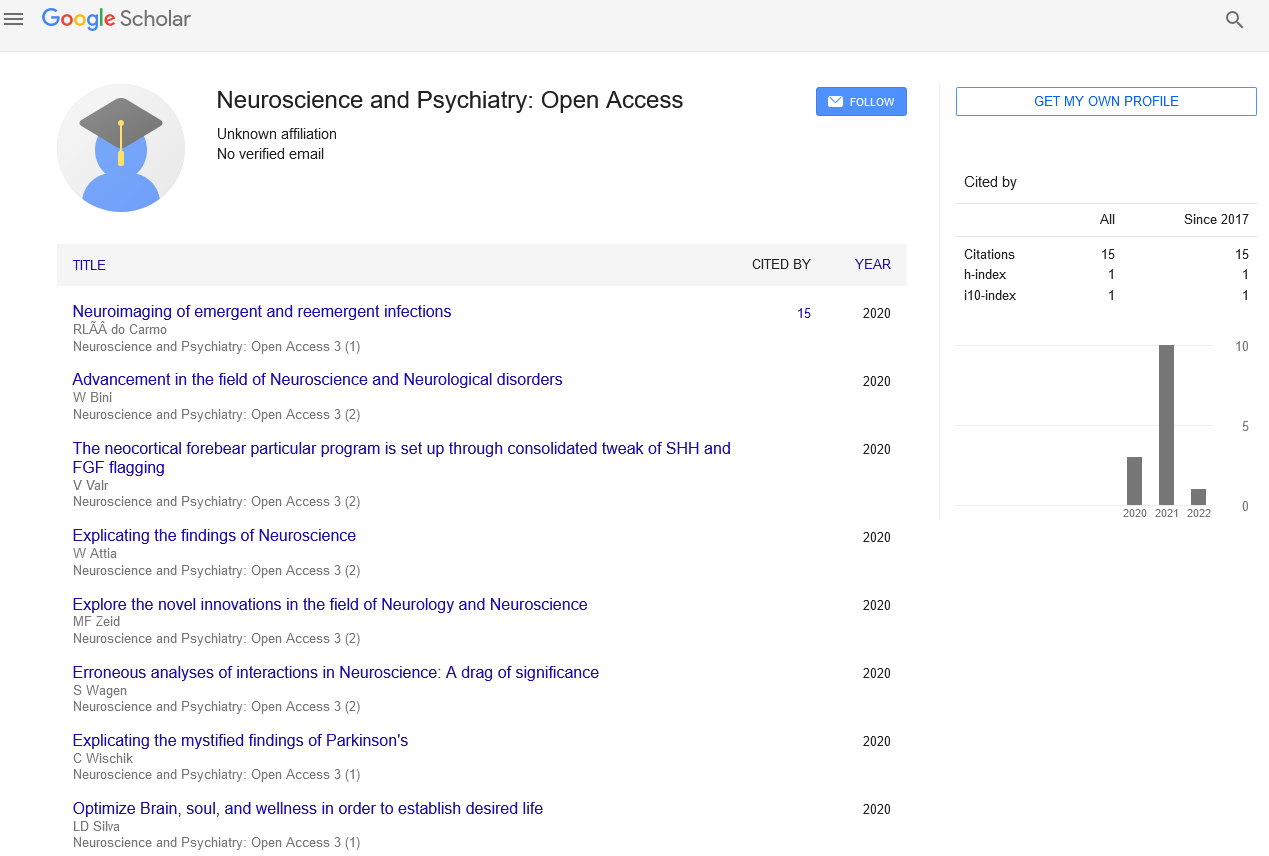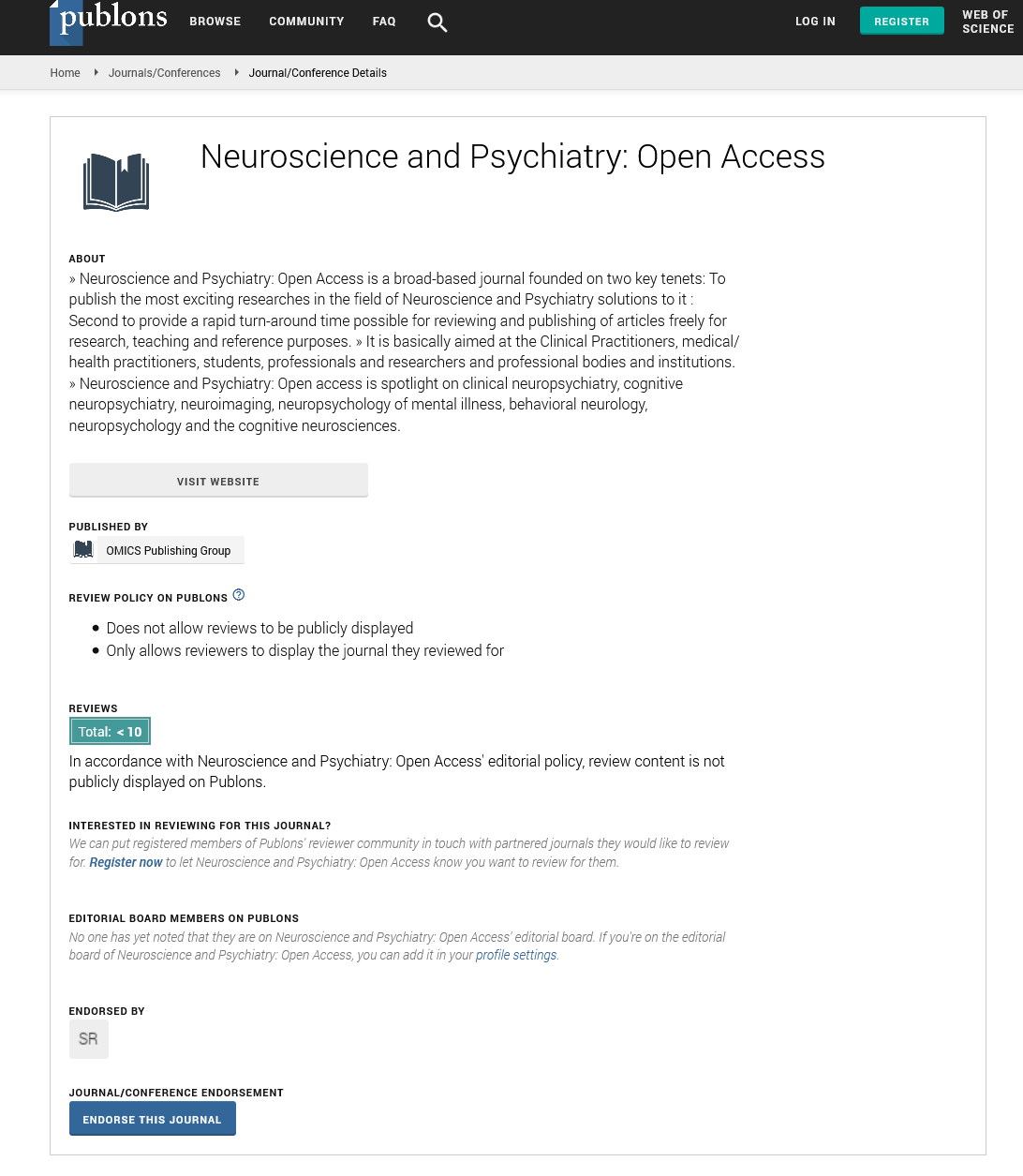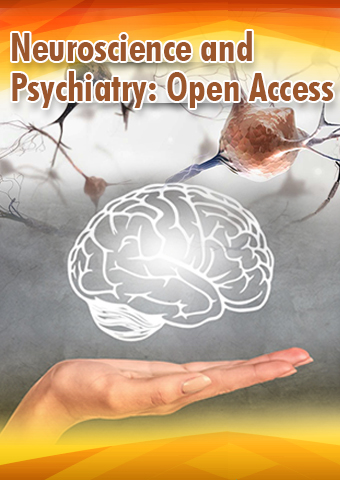Perspective - Neuroscience and Psychiatry: Open Access (2024) Volume 7, Issue 4
The Role of Neurotransmitters in Schizophrenia
- Corresponding Author:
- Georgios Schoretsanitis
Department of Neuroscience, University of Zurich, Zurich, Switzerland
E-mail: george.s@gmail.com
Received: 21-06-2024, Manuscript No. NPOA-24-140647; Editor assigned: 25-06-2024, PreQC No. NPOA-24-140647 (PQ); Reviewed: 09-07-2024, QC No. NPOA-24-140647; Revised: 19-07-2024, Manuscript No. NPOA-24-140647 (R); Published: 26-07-2024, DOI: 10.47532/npoa.2024.7(4).239-241
Introduction
Schizophrenia is a complex and debilitating psychiatric disorder that affects approximately 1% of the global population. Characterized by a combination of positive symptoms (hallucinations, delusions), negative symptoms (social withdrawal, apathy), and cognitive impairments (memory deficits, executive dysfunction), schizophrenia presents a significant challenge to both patients and healthcare providers. While the exact etiology of schizophrenia remains elusive, research has increasingly focused on the role of neurotransmitters-chemical messengers that facilitate communication between neurons in the pathophysiology of this disorder.
Description
Neurotransmitter systems implicated in schizophrenia
Several neurotransmitter systems have been implicated in the development and progression of schizophrenia. These include:
Dopamine: The dopamine hypothesis of schizophrenia proposes that dysregulation of dopamine neurotransmission plays a central role in the manifestation of psychotic symptoms. Dopamine is involved in the regulation of mood, motivation, reward processing, and motor function. Excessive dopamine activity in specific brain regions, particularly the mesolimbic pathway, is associated with positive symptoms such as hallucinations and delusions. Antipsychotic medications that block dopamine D2 receptors effectively alleviate these symptoms, supporting the dopamine hypothesis.
Glutamate: Glutamate is the primary excitatory neurotransmitter in the brain and plays a crucial role in synaptic plasticity, learning, and memory. Dysfunctions in glutamatergic neurotransmission, particularly involving N-methyl-D-aspartate (NMDA) receptors, have been implicated in schizophrenia. Reduced glutamate function may contribute to cognitive deficits and negative symptoms observed in schizophrenia patients. Emerging research suggests that drugs targeting glutamatergic pathways, such as glycine site agonists, may offer novel therapeutic strategies for treating schizophrenia.
Serotonin (5-HT): Serotonin is involved in mood regulation, sleep-wake cycles, and cognitive function. Altered serotonin levels and receptor function have been implicated in the pathophysiology of schizophrenia, particularly in relation to negative symptoms and cognitive impairments. Some antipsychotic medications exert their therapeutic effects through serotonin receptors, highlighting the role of serotonin in modulating schizophrenia symptoms.
GABA (Gamma-Aminobutyric Acid): GABA is the primary inhibitory neurotransmitter in the brain, responsible for regulating neuronal excitability. Dysregulation of GABAergic neurotransmission, including deficits in GABA synthesis or receptor function, has been linked to schizophrenia. GABAergic interneurons play a critical role in synchronizing neural activity and maintaining cortical network dynamics. Dysfunction in GABAergic signaling may contribute to the disorganized thinking and sensory processing abnormalities observed in schizophrenia patients.
Neurotransmitter dysfunction and symptomatology
The symptoms of schizophrenia can be broadly categorized into positive, negative, and cognitive domains, each associated with distinct neurotransmitter abnormalities:
Positive symptoms: Positive symptoms of schizophrenia, such as hallucinations and delusions, are primarily attributed to excessive dopamine activity in the mesolimbic pathway. Dopamine dysregulation leads to aberrant salience attribution and perceptual distortions, contributing to the psychotic experiences characteristic of schizophrenia.
Negative symptoms: Negative symptoms, including social withdrawal, diminished emotional expression, and cognitive deficits, are associated with dysfunctions in glutamatergic and GABAergic neurotransmission. Reduced glutamate function in cortical regions may impair cognitive processes such as working memory and executive function, while deficits in GABAergic signaling contribute to disorganized thinking and reduced motivation.
Cognitive impairments: Cognitive deficits in schizophrenia, such as impaired attention, memory, and problem-solving abilities, reflect disturbances in glutamatergic neurotransmission and associated cortical dysfunction. Glutamate plays a crucial role in synaptic plasticity and learning, and disruptions in glutamatergic pathways contribute to cognitive impairments observed across schizophrenia spectrum disorders.
Therapeutic implications
Understanding the role of neurotransmitters in schizophrenia has informed the development of pharmacological treatments aimed at alleviating symptoms and improving functional outcomes for patients. Antipsychotic medications, the cornerstone of schizophrenia treatment, primarily target dopamine receptors to reduce positive symptoms. First-generation antipsychotics (e.g., haloperidol) predominantly block dopamine D2 receptors, while second-generation antipsychotics (e.g., clozapine, risperidone) also modulate serotonin receptors, offering broader efficacy and reduced side effects.
Emerging therapeutic strategies include:
Glutamatergic modulators: Drugs targeting glutamatergic neurotransmission, such as NMDA receptor modulators (e.g., glycine site agonists), aim to improve cognitive function and reduce negative symptoms in schizophrenia patients. These agents enhance glutamate signaling and synaptic plasticity, addressing deficits associated with glutamatergic dysfunction.
GABAergic agents: Research into GABAergic dysfunction in schizophrenia has spurred interest in developing GABAergic modulators to enhance inhibitory neurotransmission and alleviate cognitive and negative symptoms. However, clinical trials evaluating GABAergic agents in schizophrenia are ongoing, with potential for future therapeutic advancements.
Integrated approaches: Comprehensive treatment strategies for schizophrenia often combine pharmacotherapy with psychosocial interventions, including Cognitive-Behavioral Therapy (CBT), supported employment, and family education programs. These integrated approaches aim to enhance treatment adherence, improve functional outcomes, and promote recovery in individuals living with schizophrenia.
Challenges and future directions
Despite advances in understanding neurotransmitter dysfunction in schizophrenia, several challenges remain. Variability in treatment response among patients, adverse effects associated with antipsychotic medications, and the need for personalized medicine approaches underscore the complexity of treating schizophrenia.
Future research efforts should focus on:
Precision medicine: Identifying biomarkers of neurotransmitter dysfunction to tailor treatments based on individual patient profiles.
Novel therapeutic targets: Exploring new drug targets and treatment modalities to address residual symptoms and improve long-term outcomes.
Translational research: Bridging the gap between preclinical discoveries and clinical applications to accelerate the development of innovative therapies for schizophrenia.
Conclusion
In conclusion, the role of neurotransmitters in schizophrenia underscores the intricate neurochemical basis of this complex disorder. By elucidating the contributions of dopamine, glutamate, serotonin, and GABA to symptomatology and treatment response, researchers and clinicians are advancing towards more effective, personalized approaches to managing schizophrenia and enhancing the quality of life for affected individuals. As neuroscience continues to unravel the complexities of neurotransmitter dysfunction in schizophrenia, the promise of targeted therapies and improved outcomes offers hope for the future of mental health care.


